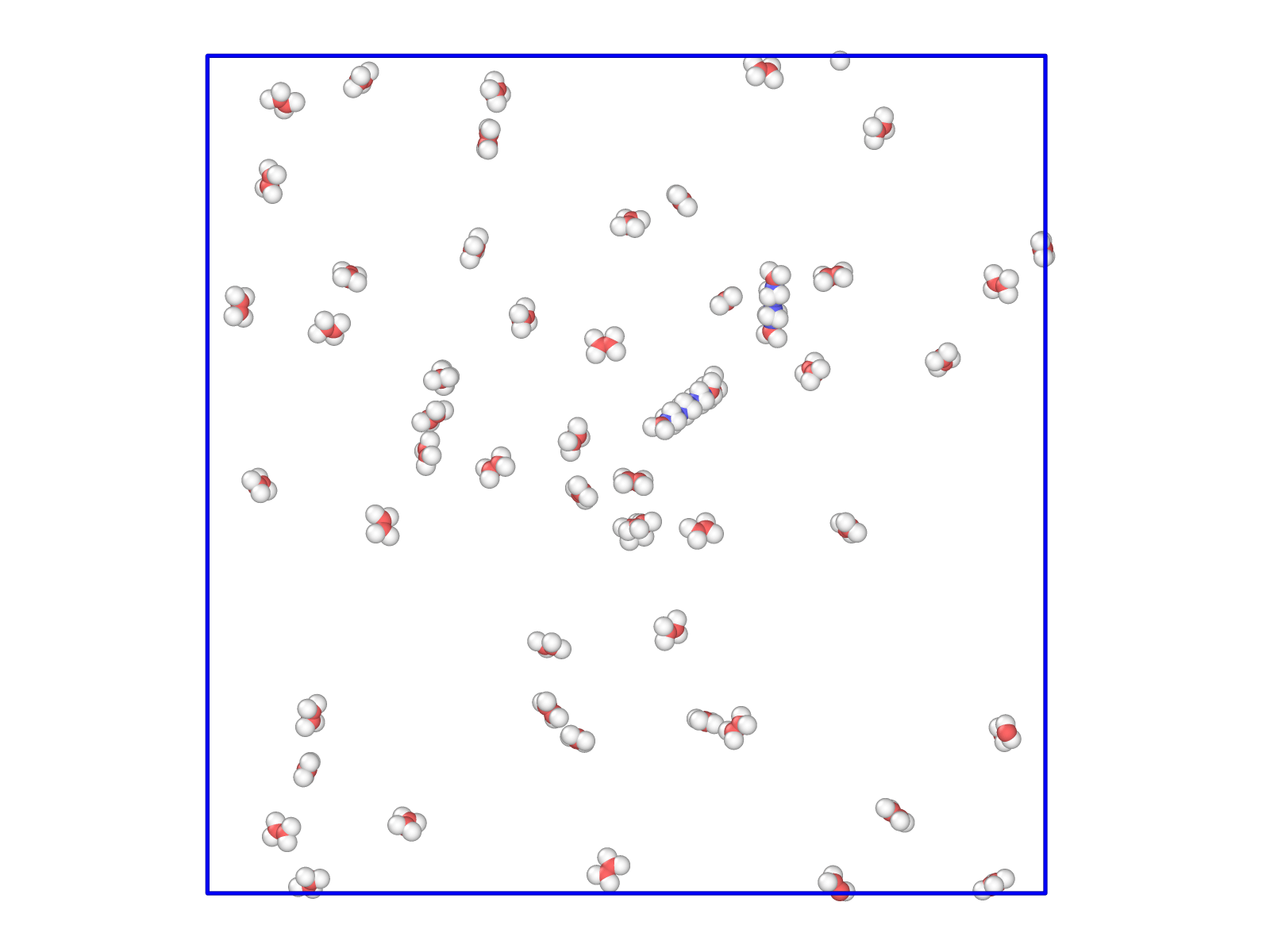1pre.molecule_template (140 KB)
1pos.molecule_template (1.5 KB)
data_label.data (128.4 KB)
2ethylene_map (135 Bytes)
in.N_polymer.stabilized (2.6 KB)

My guess would be due to the thermostat–it is trying to control the temperature of the system but you have some really fast velocities. It could point to issues in your model or setup.
After modifying temperature 300K, this problem is still existed.
@jrgissing this seems like an issue with how to use fix bond/react with stabilisation properly.
What I mean is I think your simulation is unstable. The thermostat is trying to put the brakes on and as a consequence most of the particles get slowed down. I’m guessing if you didn’t have a thermostat then the system would blow up or not conserve energy properly. So the atoms moving slowly is just a symptom, not the root issue.
Density is significantly important.
Warning: I have not actually used fix bond/react before. However, my first guess at your situation (until @jrgissing pops in!) is this: notice that your reactant molecules are “frozen”, while your product molecules are moving normally.
This would be consistent with fix bond/react treating those reactant molecules as candidates for a reaction. With stabilization, reacting atoms are integrated with fix nve/limit before and after a reaction.
My hypothesis therefore is that with your settings LAMMPS is considering almost all of your molecules as candidate reactants. As such, the fix nve/limit integrator artificially limits how far any of them can move in one timestep, effectively freezing them.
I don’t know what settings to change to fix this (maybe have a smaller “search radius” with your molecular templates, or a looser stabilisation time step, or something else).
This issue is usually due to reacting atoms being released back to the system-wide thermostat with too much energy, which is especially apparent for small, low-density systems. Uncommenting out the line involving ‘bond_react_MASTER_group’ in your input script should help. This line makes sure reacting atoms have a reasonable kinetic energy before being released back to the system-wide (nonreacting) thermostat.
Blockquote
Withstabilization, reacting atoms are integrated withfix nve/limitbefore and after a reaction.
Note that fix bond/react does not integrate nonreacting atoms with fix nve/limit, only currently or recently reacting atoms.
Hi, thanks for the clarification!
the reacting atoms is how to effect the movement of non-reacting atoms ?
that’s true, due to the global nature of MD thermostats. atoms are exchanged between reacting and nonreacting groups.
Sorry, I may not have made it clear. My question is: Why do the reacted atoms released back to the NVT ensemble with huge energy causes the non-reacted atoms to stand still?
As @jrgissing said, “because of the global nature of MD thermostats”. The thermostat calculates a group’s temperature from its total kinetic energy and then rescales (or in general modifies) the velocities of all atoms in the group as a response.
Thanks !
I uncommented out the line involving ‘bond_react_MASTER_group’ in input script, but it does not work, these non-reacting atoms are standing still when the reacted atoms come out, Why does this situation often occur in small or low density systems?
A couple questions/comments:
- which LAMMPS version are you using? (@akohlmey can we make this a mandatory thing to fill out for these types of posts?)
- your pre-reaction template is incorrectly formatted. I’m guessing you had to correct that for actual runs
- does the input script you provided (with only 1 reaction active) correspond to the movie you provided? I am not seeing the same behavior when I run it.
- There is still some slight slowing of atoms at the beginning of the simulation, when I run it. However, it happens even when reactivity is turned off, due a couple oligomers that are not well-minimized in your initial configuration. Please check that the non-reactive system is well-behaved first.
To answer your question: small, low-density systems have fewer atoms to average over, which magnifies bad physics. Again, you need to read up on how thermostats work in MD
Thanks for your reply,
timescale for stabilization is significantly important,
due to small timestep 0.1 ,
the reacted atoms have huge kinetic energy when they
released back to system-wide thermostat.
Thanks angain !
We should use Discourse Topic Templates to enforce this, and Reply Templates so we can quickly auto-reply “Your help request has insufficient information - please fill a Getting Help template before proceeding.” to problematic asks.
Good point, I did not notice your small timestep. So, did decreasing the ‘xmax’ argument of the ‘stabilization’ keyword solve your problem?